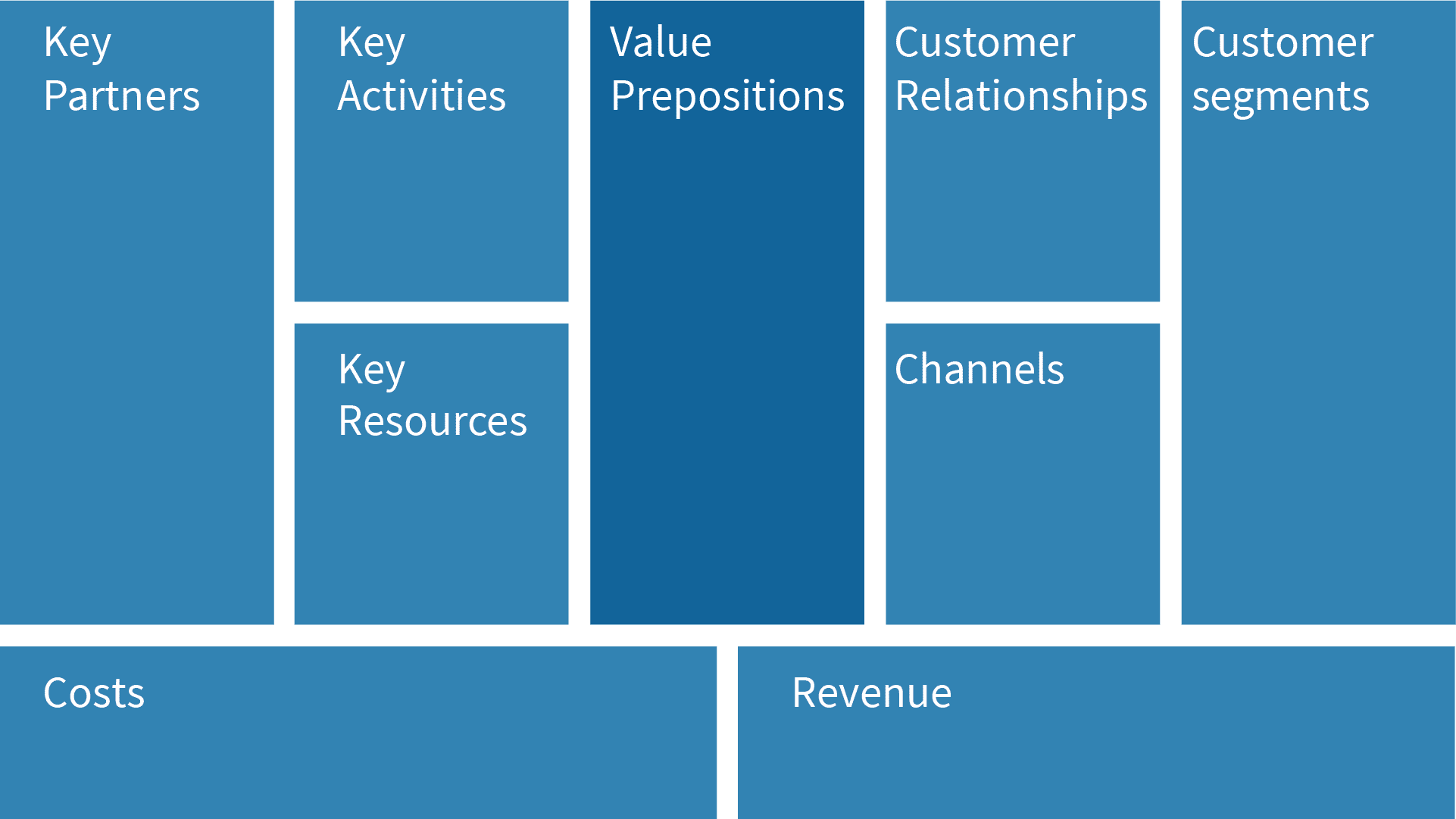Your XDi-Team
The digital age is filled with complexity and uncertainty – at work and home.
Agile project and product management is the way of today’s working world.
Here, we’ll give you a look into how widespread and valuable agile methods really are. So valuable that the field is growing like never before.
Contents
- Agility: A Definition
- Working with Agile – The Tools
- It’s a question of carer: How und where can I learn Agile?
- Agile Methods
- Business Model Canvas (BMC)
- Management Solutions: Product, Stakeholder, Leadership Product Strategy and Product Roadmap
- Product Strategy and Product Roadmap
- Agile Requirement Engineering
- User Experience Design and Design Thinking in Agile Processes
AGILITY: A DEFINITION
Agility is the ability of an organization (a business, agency, or NGO) to flexibly and proactively react to as well as implement change.
Agility thus represents an alternative to process- and project-oriented organizational structures. As such, it ensures appropriate resource expenditure and can embolden project and product teams by giving them feelings of synergy.
The term itself can be traced back to 1991 from the authors Steven Goldman, Roger Nagel and Kenneth Preiss from the Iacocca Institute at Lehigh University in Bethlehem. In 1994, the book “Agile Competitors and Virtual Organizations” followed. Agility has been a key component of software development since the popular Agile Manifesto came out in January 2001.
WORKING WITH AGILE – THE TOOLS
Agile tools are an important way for project and product managers to ensure efficient and agile processes in organizations, businesses, and start-ups looking to increase their efficiency.
Jira and Trello are the most popular agile tools. Jira allows the creation of projects and workflows through the use of Kanban and Scrum boards as well bug and bugfix tracking. The main plus of working with Jira is that it visualizes project progress on a single board so that everyone stays up-to-date with the status of their assignments.
A QUESTION OF CAREER: HOW AND WHERE CAN I LEARN AGILE?
There’s different ways to learn both agile project and product management. Continuing education courses and seminars are one possible way. In fact, there’s no real prerequisites for participating in these courses – except for the desire to learn these techniques that will define the future.
To find a workflow that works for you, we’re now going to look at the most important methods and concepts surrounding agility in organizations and businesses.
AGILE METHODS
The Agile Manifesto described above was the inspiration for the development of practical ways of implementing its relatively abstract concepts.
Typical ways of implementing agility include techniques like daily stand-ups, and user stories and methods like Kanban, Scrum, or Lean Startup.
Kanban
Kanban, which originates from Japanese, essentially means “board” or “container.” Japanese industrial engineer and businessman Taiichi Ohno created Kanban in 1947 to optimize production processes at Toyota.
Today, Kanban is frequently described as a Lean-Workflow method due to its sorting of tasks into categories like “to-do”, “in-progress” and “done”. As a result, shortages or roadblocks can be identified and avoided early on.
One tool based on the Kanban principle is Trello.
Scrum
Scrum is an agile framework for project management. It involves an easy-to-follow structuring and scheduling of tasks based on predefined events (Sprint Planning, Daily Scrum, Sprint Review, Sprint Retrospective), roles (Scrum Master, Product Owner, Developer), and artifacts (Product Backlog, Spring Backlog and Product Increment).
Jira is an excellent tool for implementing Scrum.
Lean Startup
Lean Startup is, as its name suggests, relies on “lean” processes to start businesses and implement business ideas. It uses iterative, customer-centered testing to minimize risk of failure and maximize market readiness. Hypotheses are formulated and tested, and customer feedback guides the process. This process is known as a “Build-Measure-Learn-Cycle.”
Minimum Viable Product (MVP)
The founder of the Lean Startup Principle Eric Ries coined another important term: Minimal Viable Product (MVP). The MVP is a version of a product that is just functional enough to produce valuable customer feedback through testing – It thus requires minimal development.
Objectives and Key Results (OKR)
OKR is a goal-setting methodology. Here, team members play an active role in formulating business objectives.
It first involves defining an overarching objective and then identifying the steps necessary to reach it. Each OKR-Loop lasts 3 months and contributes to reaching the so-called “Moals” (Midterm goal or yearly goal). OKRs work by making business goals and team responsibilities transparent. In this way, frustration and risk of error can be reduced.
Business Model Canvas (BMC)
BMC, developed by Alexander Osterwalder and introduced in his 2008 book “Business Model Generation” is a framework for visualizing and structuring business models and startup ideas.
BMC has 9 elements, which are organized in the table below. When filled out, each section provides entrepreneurs clarity about their emerging business model.

BMC’s biggest advantage is its flexibility. It’s a versatile brainstorming tool that visualizes core business goals and their relationships to each other in an organized way.
VALUE PROPOSITION DESIGN AND VALUE PROPOSITION CANVAS
As part of Osterwalder’s Business Model Canvas, Value Proposition Design does as its name suggests: The so-called “Value Proposition” of a product guides the entire development process and promises a user-centered result. A Value Proposition Canvas accompanies the design process, which helps development teams concentrate on the utility of the product rather than on specific functions.
An essential attribute of Value Proposition Design is the analysis of Customer Jobs (the desired result), Customer Pains (hurdles and problems), and Customer Gains (expectations and needs). Concretely, these components are combined to form Products & Services (to satisfy the Customer Job), Pain Relievers (to alleviate Customer Pains), and Gain Creators (to fulfill expectations and wishes).
MANAGEMENT SOLUTIONS: PRODUCTS, STAKEHOLDERS, AND LEADERSHIP
Of course, agility also has an impact beyond software development. Management solutions also have to adapt.
PRODUCT LIFE CYCLE MANAGEMENT (PLM)
Product Life Cycle Management is a concept for integrating information gathered over the entire life cycle of a product. The management structure encompasses the following phases: Beginning of Life (BoL), Middle of Life (MoL), and End of Life (EoL). By succinctly summarizing each stage of the product life cycle, PLM affords all participants transparent access to product information. Likely benefits of this management structure are improved customer satisfaction and competitiveness of the product.
Stakeholder Management
For agile processes to work, identifying the necessary human resources and capital is essential. Stakeholder Management serves exactly this purpose by identifying the needs of so-called stakeholders and incorporating them into a project. Key steps in Stakeholder Management are Stakeholder Analysis, Stakeholder Mapping, Stakeholder Communication, and Stakeholder Engagement.
The potential roles of stakeholders are diverse. For example, customers, investors, delivery people, employees, and owners may all act as stakeholders.
Agile Leadership
Agile also redefines the role and duties of a manager.
Agile leadership implies the creation of a work environment that nurtures agile cooperation. Principles of agile leadership include product ownership, self-sufficient teams, and servant leadership. According to the Lean Leadership Model from Toyota we saw above, Agile Leadership consists of four sequential steps (Personal development of the manager, coaching, continual improvement, goal-setting and development of long-term business objectives)
Product Strategy and Product Roadmap
This section covers everything you need to know about product strategy and product roadmaps.
Agile Requirements Engineering
Agile requirements, unlike conventional ones, don’t need functional specification requirements. In agile, requirements are defined iteratively.
User Stories
A user story defines requirements from the point of view of the user. An agile User Story can be as simple as a well formulated sentence that captures the user, their requirements, and the purpose of developing the product.
User Story Mapping/Story Maps
With increasing project complexity, backlogs can become messy and confusing. Key project milestones such as deadlines, responsibilities, and roles can become distorted. User story maps help to combat this issue. They clearly relate key project attributes so that relationships between user stories and epics are visible.
USER EXPERIENCE DESIGN AND DESIGN THINKING IN AGILE PROCESSES
In a software development context, a worthwhile question is the compatibility of agile processes with User Experience Design. UX Designers are key players in the iterative development of websites, software, and apps. Agile wasn’t originally developed for UX design, so user stories don’t necessarily consider UX design timelines and use cases. Thankfully, there are remedies for this conundrum.
Design Thinking is a related discipline. But in contrast to agile frameworks, which tackle projects iteratively, Design Thinking is, well, a way of thinking. As such, Design Thinking isn’t bound to strict timelines. Therefore, it can help designers come up with surprising and innovative solutions.
COMPETITIVENESS THROUGH AGILE
Organizations are facing unforeseen challenges in new digital economies and have to adapt, or even better, adapt agilely. Agility isn’t limited to product development teams – Marketing, R&D, and other departments can also benefit from agile frameworks. Departments and processes less suitable for agile require custom-fit interfaces to benefit from agile principles. But in the end, agile is the future.




